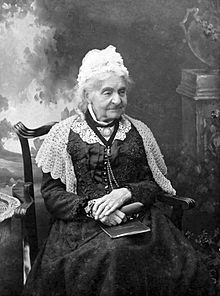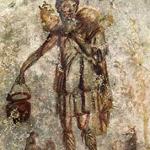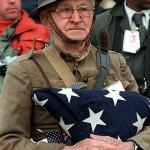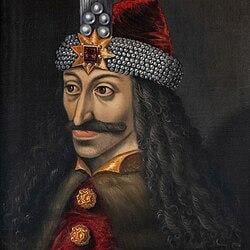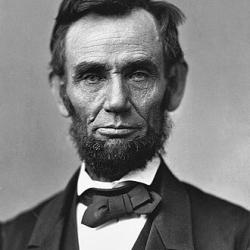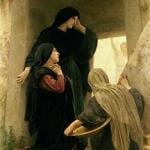1889 is the crossroads where the descendants, living persons and ancestors of previous, current and future influencers meet on the chronological timeline of earth’s history.
Back then Jim Larry Wikipedia was running around collecting data in which the Catholic Bard quotes directly for all the bio descriptions read in these articles.
Wikipedia is a free content online encyclopedia written and maintained by a community of volunteers, known as Wikipedians, through open collaboration and the wiki software MediaWiki. Wikipedia is the largest and most-read reference work in history, and is consistently ranked among the ten most visited websites; as of August 2024, it was ranked fourth by Semrush and seventh by Similarweb. Founded by Jimmy Wales and Larry Sanger on January 15, 2001, Wikipedia has been hosted since 2003 by the Wikimedia Foundation, an American nonprofit organization funded mainly by donations from readers

These guys helped shaped the world in our century by giving everyone easy access to information by creating an online encyclopedia that anyone can access with great ease. From there I found information on those alive in 1889 who shaped the world.
- There were leaders who led their countries for better or worse into prosperity and growth or into war and destruction.
- Humanataries who helped change the social structure of their countries for the benefit of all mankind.
- Soldiers who fought for freedom or tyranny.
- Doctors and scientists who developed ways for mankind to advance technology and medically.
- Wealthy people who created businesses that still have impact on society today.
- The ancestors of those who helped shape the world in the 20th and 21st Centuries.
- The main players who started the wars that brought the world together to death and destruction.
- And others who strived to make this world a better place or lived to see it all happen.
These are the individuals I looked at and choose to highlight in this edition of
Those who helped Shape the World.
And Now…
We Start With
The Oldest Generation of 1889
With Those
Born in the 18th Century
Geert Adriaans Boomgaard
(September 21, 1788; baptized September 23, 1788– February 3, 1899)
She was a Dutch supercentenarian and is generally accepted by scholars as the first validated case on record.
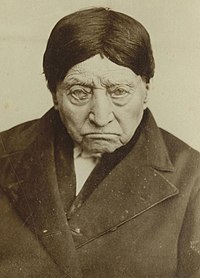
Margaret Ann Neve
(May 18, 1792 – April 4, 1903)
She was the second validated supercentenarian after Geert Adriaans Boomgaard. Neve lived at Saint Peter Port on the island of Guernsey in the English Channel. She was also the first proven individual whose life spanned three centuries (18th to the 20th centuries).
Born in 1800’s
Napoleon Conquers & Lewis & Clark Explore The Early 1800’s
Sir Edwin Chadwick KCB
(January 24, 1800 – July 6, 1890)
He was an English social reformer who is noted for his leadership in reforming the Poor Laws in England and instituting major reforms in urban sanitation and public health. A disciple of Utilitarian philosopher Jeremy Bentham, he was most active between 1832 and 1854; after that he held minor positions, and his views were largely ignored. Chadwick pioneered the use of scientific surveys to identify all phases of a complex social problem, and pioneered the use of systematic long-term inspection programmes to make sure the reforms operated as planned.
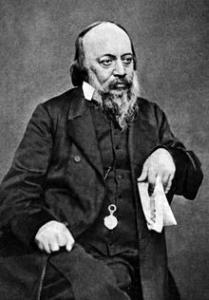
Salome Sellers
(October 19, 1800 – January 9, 1909)
She was an American centenarian who was the last known, verified person born in the 18th century.
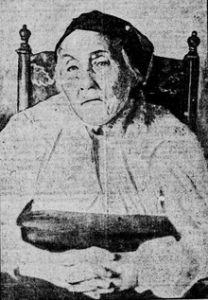
Dorothea Dix,
(April 4, 1802 – July 17, 1887)
July 17, 1889 marked the 2nd anniversary of her death.
She was an American advocate on behalf of the indigent mentally ill who, through a vigorous and sustained program of lobbying state legislatures and the United States Congress, created the first generation of American mental asylums. During the Civil War, she served as a Superintendent of Army Nurses.
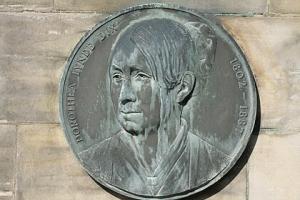
Born in 1810’s
Frankenstein’s Silent Night 1810 – 1819
Elizabeth Cady Stanton
(November 12, 1815 – October 26, 1902)
She was an American writer and activist who was a leader of the women’s rights movement in the U.S. during the mid- to late-19th century. She was the main force behind the 1848 Seneca Falls Convention, the first convention to be called for the sole purpose of discussing women’s rights, and was the primary author of its Declaration of Sentiments. Her demand for women’s right to vote generated a controversy at the convention but quickly became a central tenet of the women’s movement. She was also active in other social reform activities, especially abolitionism.
In 1851, she met Susan B. Anthony and formed a decades-long partnership that was crucial to the development of the women’s rights movement. During the American Civil War, they established the Women’s Loyal National League to campaign for the abolition of slavery, and they led it in the largest petition drive in U.S. history up to that time. They started a newspaper called The Revolution in 1868 to work for women’s rights.
After the war, Stanton and Anthony were the main organizers of the American Equal Rights Association, which campaigned for equal rights for both African Americans and women, especially the right of suffrage. When the Fifteenth Amendment to the U.S. Constitution was introduced that would provide suffrage for black men only, they opposed it, insisting that suffrage should be extended to all African Americans and all women at the same time.
Despite her record of racially insensitive remarks and occasional appeals to the racial prejudices of white people, Stanton applauded the marriage in 1884 of her friend Frederick Douglass to Helen Pitts, a white woman, a marriage that enraged racists. Stanton wrote Douglass a warm letter of congratulation, to which Douglass responded that he had been sure that she would be happy for him. When Anthony realized that Stanton was planning to publish her letter, she convinced her not to do so, wanting to avoid associating women’s suffrage with an unrelated and divisive issue
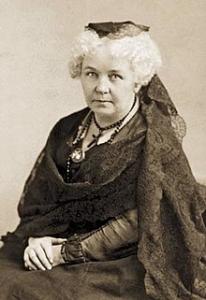
Martha Ann Erskine Ricks
(c. 1817–1901)
She was an Americo-Liberian woman among the early colonists to the Colony of Liberia. Born into slavery in Tennessee, she was freed by her father, George Erskine and emigrated at age 13 with him and her family to Liberia in 1830.
While chiefly working in agriculture there, Ricks also was known for her needlework and became an expert quilter. She became interested in Queen Victoria and worked for more than two decades on a quilt for her. In 1892 Ricks traveled with former First Lady Jane Roberts to England, where she received a Royal Audience with Queen Victoria and personally presented her the quilt.
She was 72 in 1889.
Frederick Douglass
(c. February 1817 or February 1818– February 20, 1895)
Escaped slave and popular writer and speaker Frederick Douglass was appointed the United States’s minister resident and consul-general to the Republic of Haiti and Chargé d’affaires for Santo Domingo by President Benjamin Harrison himself in 1889.
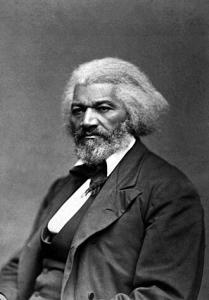
Born in 1820’s
The Mormon Saturday Evening Post Arrives in the 1820s
Susan B. Anthony
(February 15, 1820 – March 13, 1906)
She was an American social reformer and women’s rights activist who played a pivotal role in the women’s suffrage movement. Born into a Quaker family committed to social equality, she collected anti-slavery petitions at the age of 17. In 1856, she became the New York state agent for the American Anti-Slavery Society.
In a speech in 1889, she noted that women had always been taught that their purpose was to serve men, but “Now, after 40 years of agitation, the idea is beginning to prevail that women were created for themselves, for their own happiness, and for the welfare of the world.” Anthony was sure that women’s suffrage would be achieved, but she also feared that people would forget how difficult it was to achieve it, as they were already forgetting the ordeals of the recent past:
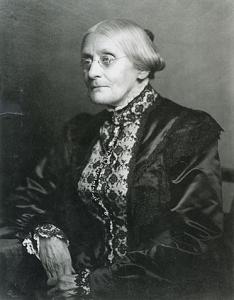
Florence Nightingale
(May 12, 1820 –August 13, 1910)
She was an English social reformer, statistician and the founder of modern nursing. Nightingale came to prominence while serving as a manager and trainer of nurses during the Crimean War, in which she organised care for wounded soldiers at Constantinople. She significantly reduced death rates by improving hygiene and living standards. Nightingale gave nursing a favourable reputation and became an icon of Victorian culture, especially in the persona of “The Lady with the Lamp” making rounds of wounded soldiers at night.
In 1889 loving Superstar Nurse Florence Nightingale was writing letters and advocating for nursing type stuff while losing her eyesight and various friends from old age.
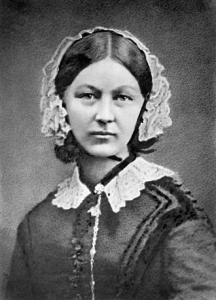
George Williams (philanthropist)
(October 11, 1821 – November6, 1905)
He was an English philanthropist, businessman and founder of the Young Men’s Christian Association (YMCA). The oldest and largest youth charity in the world, its aim is to support young people to belong, contribute and thrive in their communities.
Williams was knighted by Queen Victoria in her 1894 Birthday Honours. He died in 1905 and is buried in St Paul’s Cathedral.
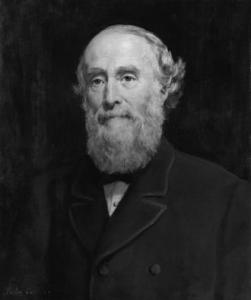
Clara Barton
(December 25, 1821 – April 12, 1912)
She was an American nurse who founded the American Red Cross. She was a hospital nurse in the American Civil War, a teacher, and a patent clerk. Since nursing education was not then very formalized and she did not attend nursing school, she provided self-taught nursing care. Barton is noteworthy for doing humanitarian work and civil rights advocacy at a time before women had the right to vote. She was inducted into the National Women’s Hall of Fame in 1973.
Within days after the Johnstown Flood in 1889, she led her delegation of 50 doctors and nurses in response, founding what would become Conemaugh Health System.
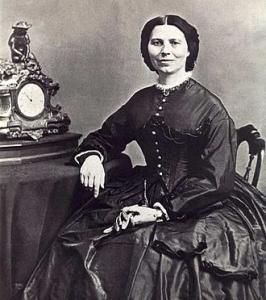
William Parker (abolitionist)
(1821 – April 14, 1891)
He was an American former slave who escaped from Maryland to Pennsylvania, where he became an abolitionist and anti-slavery activist in Christiana. He was a farmer and led a black self-defense organization. He was notable as a principal figure in the Christiana incident, 1851, also known as the Christiana Resistance. Edward Gorsuch, a Maryland slaveowner who owned four slaves who had fled over the state border to Parker’s farm, was killed and other white men in the party to capture the fugitives were wounded. The events brought national attention to the challenges of enforcing the Fugitive Slave Law of 1850.
Chief John “White Wolf” Smith
(1822–1826 (claimed 1784) – February 6, 1922)
He was an American longevity myth. He was a Chippewa (Ojibwe) Indian.
John Smith claimed to have been born around 1784 in Minnesota, USA. He lived in Cass Lake, Minnesota his entire life. He had eight wives and no children, except for an adopted son, named Tom Smith.
Smith converted to Catholicism in about 1914. Around 1915, he was knocked down by a switch engine. He spend three weeks at hospital, and managed to recover. One week before his death, he caught pneumonia.
John Smith died of pneumonia in Cass Lake, Minnesota, USA, at the claimed age of at least 138 years, 0 days. He is buried in the Catholic section of Pine Grove Cemetery in Cass Lake.
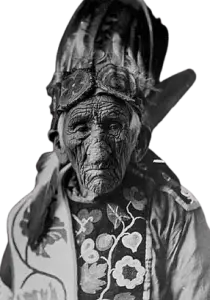
Harriet Tubman
(c. March 1822 – March 10, 1913)
She was an American abolitionist and social activist. After escaping slavery, Tubman made some 13 missions to rescue approximately 70 enslaved people, including her family and friends, using the network of antislavery activists and safe houses known collectively as the Underground Railroad. During the American Civil War, she served as an armed scout and spy for the Union Army. In her later years, Tubman was an activist in the movement for women’s suffrage.
in 1889 Tubman was living in Auburn and had 3 years earlier in 1886 bought some land to create a nursing home for Black Americans. Her husband died just a year earlier and the following year she would become more involved in the movement for women’s suffrage.
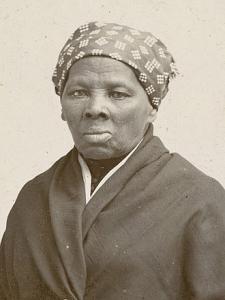
Thomas Mundy Peterson
(October 6, 1824 – February 4, 1904)
This man from Perth Amboy, New Jersey, has been claimed to be the first African American to vote in an election under the just-enacted provisions of the 15th Amendment to the United States Constitution.
His vote was cast on March 31, 1870; the Amendment had been ratified almost two months earlier, on February 3, but was only officially certified by Secretary of State Hamilton Fish on March 30.
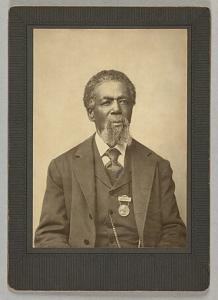
John Langdon Down
(November 18, 1828 – October 7, 1896)
He was a British physician best known for his description of the genetic condition now known as Down’s or Down syndrome, which he originally classified in 1862. He is also noted for his work in social medicine and as a pioneer in the care of mentally disabled patients.
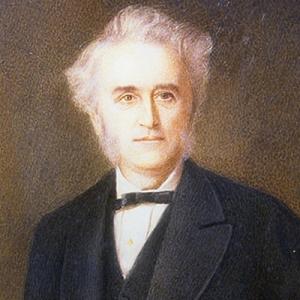
Born in 1830’s
Mark Twain and the Wellerman Come on a Comet – 1830 – 1839
Matilda Gilruth Carpenter
(1831–1923)
She was a prominent member of the Woman’s Christian Temperance Union, known for leading the crusade against alcohol sales in Ohio in 1874.
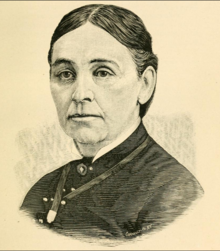
Anna Leonowens (Anna of The King and I)
November 5, 1831 –January 19, 1915)
She was an Anglo-Indian or Indian-born British travel writer, educator, and social activist.
She became well known with the publication of her memoirs, beginning with The English Governess at the Siamese Court (1870), which chronicled her experiences in Siam (modern Thailand), as teacher to the children of the Siamese King Mongkut. Leonowens’s own account was fictionalised in Margaret Landon‘s best-selling novel Anna and the King of Siam (1944), as well as adaptations for other media such as Rodgers and Hammerstein‘s 1951 musical The King and I.
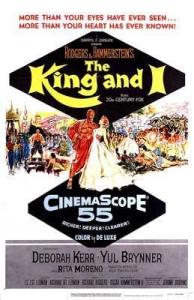
Jonathan (tortoise)
(hatched c. 1832)
He is a Seychelles giant tortoise (Aldabrachelys gigantea hololissa), a subspecies of the Aldabra giant tortoise (Aldabrachelys gigantea). His approximate age is estimated to be 191 as of 2024, making him the oldest known living land animal. Jonathan resides on the island of Saint Helena, a British Overseas Territory in the South is a Seychelles giant tortoise (Aldabrachelys gigantea hololissa), a subspecies of the Aldabra giant tortoise (Aldabrachelys gigantea). His approximate age is estimated to be 191 as of 2024, making him the oldest known living land animal.[4][5] Jonathan resides on the island of Saint Helena, a British Overseas Territory in the South Atlantic Ocean.Ocean.
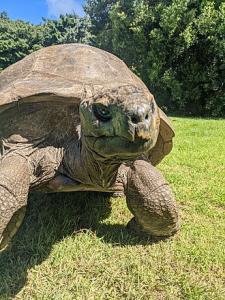
Mother Jones
(1837 (baptized) – November 30, 1930)
She was an Irish-born American labor organizer, former schoolteacher, and dressmaker who became a prominent union organizer, community organizer, and activist. She helped coordinate major strikes, secure bans on child labor, and co-founded the Labor unionist trade union, the Industrial Workers of the World (IWW).
After Jones’s husband and four children all died of yellow fever in 1867 and her dress shop was destroyed in the Great Chicago Fire of 1871, she became an organizer for the Knights of Labor and the United Mine Workers union. In 1902, she was called “the most dangerous woman in America” for her success in organizing miners and their families against the mine owners.[1] In 1903, to protest the lax enforcement of the child labor laws in the Pennsylvania mines and silk mills, she organized a children’s march from Philadelphia to the home of President Theodore Roosevelt in New York.

John Muir
(April 21, 1838 – December 24, 1914)
Also known as “John of the Mountains” and “Father of the National Parks“, was a Scottish-born American naturalist, author, environmental philosopher, botanist, zoologist, glaciologist, and early advocate for the preservation of wilderness in the United States.
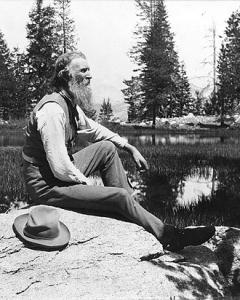
Marianne Hainisch,
(March 25, 1839 –May 5, 1936)
She was the founder and leader of the Austrian women’s movement. She was also the mother of Michael Hainisch, the second President of Austria (1920–1928).
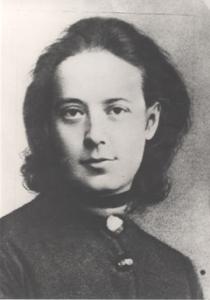
Born in 1840’s
The Longest Pope at La Salette -1840’s
Order of Elk’s Founder’s Wife
Charles Algernon Sidney Vivian
(October 22, 1842 – March 20, 1880)
He is the founder of the Benevolent and Protective Order of Elks, son of a clergyman, was born in Exeter, Devonshire, England on
In November 1867, Vivian arrived in New York City to try his fortune. After coming to America, he and a small group of entertainers who were living in boarding houses in New York formed a social group called the “Jolly Corks”, which became the foundation of the Order of Elks. When one of their members died shortly before Christmas 1867, leaving his wife and children destitute, the Jolly Corks decided that in addition to good fellowship, they wanted to have a more enduring organization to serve those in need. On February 16, 1868, they established the Benevolent and Protective Order of Elks.
He was also a successful comic singer and actor in London, won acclaim for his role as the “Admiral” in Gilbert and Sullivan’s “Pinafore”.
He married Mary Imogene Holbrook Vivian (1847-1931) in Oakland, California on July 9, 1876. The newlyweds, billing themselves as “The Vivian Entertainment,” left California immediately, performing in towns, mining camps, and military forts throughout the Western states and in larger cities such as Chicago, Pittsburgh and New York.

Lillie Hitchcock Coit
(August 23, 1843 – July 22, 1929)
She was a patron of San Francisco’s volunteer firefighters and the benefactor for the construction of the Coit Tower in San Francisco, California.
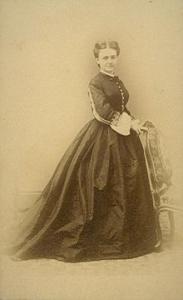
Caroline Weldon
(December 4, 1844 – March 15, 1921)
She was a Swiss-American artist and activist with the National Indian Defense Association. Weldon became a confidante and the personal secretary to the Lakota Sioux Indian leader Sitting Bull during the time when Plains Indians had adopted the Ghost Dance movement.
She joined him, together with her young son Christy, at his compound on the Grand River, sharing with him and his family home and hearth. In 1889, during a time of harsh winters and long droughts impacting the Sioux Reservation, a Paiute Indian named Wovoka spread a religious movement from Nevada eastward to the Plains that preached a resurrection of the Native. It was known as the “Ghost Dance movement” because it called on the Indians to dance and chant for the rising up of deceased relatives and the return of the buffalo. The dance included shirts that were said to stop bullets. When the movement reached Standing Rock, Sitting Bull allowed the dancers to gather at his camp. Although he did not appear to participate in the dancing, he was viewed as a key instigator. Alarm spread to nearby white settlements.

Joseph Pulitzer
April 10, 1847 – October 29, 1911)
He was a Hungarian-American politician and newspaper publisher of the St. Louis Post-Dispatch and the New York World. He became a leading national figure in the Democratic Party and was elected congressman from New York.
Pulitzer’s name is best known for the Pulitzer Prizes established in 1917 as a result of the specified endowment in his will to Columbia University. The prizes are given annually to recognize and reward excellence in American journalism, photography, literature, history, poetry, music, and drama. Pulitzer also funded the Columbia School of Journalism with his philanthropic bequest; it opened in 1912
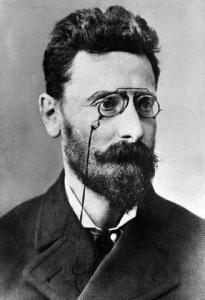
Susie King Taylor,
(August 6, 1848 – October 6, 1912)
She was an American nurse, educator and memoirist. She is known for being the first African-American nurse during the American Civil War. Beyond just her aptitude in nursing the wounded of the 1st South Carolina Volunteer Infantry Regiment, Taylor was the first Black woman to self-publish her memoirs. She was the author of Reminiscences of My Life in Camp with the 33rd United States Colored Troops, Late 1st S.C. Volunteers. She was also an educator to formerly bonded Black people in the Reconstruction-era South by opening various schools in Georgia. Taylor would also be a part of organizing the 67 Corps of the Women’s Relief Corps in 1886.

Euphemia Wilson Pitblado,
(1849 – June 17, 1928)
She was a Scottish-born American women’s activist, social reformer, and writer. She traveled in Europe, Canada, and in the United States, crossing the Atlantic five times. Pitblado was a delegate to the National Woman Suffrage Association Convention in Washington, D.C., the New England Woman’s Suffrage Association Conventions, the National Woman’s Christian Temperance Union (WCTU) Conventions in New York City, Denver, and Chicago, and to the annual Woman’s Foreign Missionary Conventions in Boston and Lowell, Massachusetts. Her principal literary works were addresses upon temperance, suffrage, missions, education, and religion.
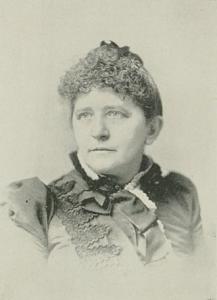
Born in 1850’s
Stop and Pray the Angelus between 1850 – 1859
Elizabeth Webb Nicholls
(February 21, 1850 –August 3, 1943)
She was a key suffragist in the campaign for votes for women (also called ‘suffrage‘) in South Australia during the 1890s.
She took on several high-profile roles in the capital of South Australia, Adelaide and was President of the Woman’s Christian Temperance Union (WCTU) of South Australia,
In July 1886, three months after its formation, Nicholls joined the Woman’s Christian Temperance Union of South Australia. Becoming heavily involved in 1888, Nicholls became the provisional president of the Adelaide branch late that year and was elected colonial president in 1889, holding the position until 1897, one of the most prominent organisations in the successful campaigns which made South Australia the first of the Australian colonies to grant women the right to vote in 1894.
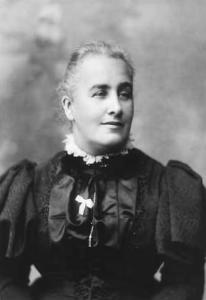
Jnanadanandini Devi
(July 26, 1850 – October 1, 1941)
She was a social reformer who pioneered various cultural innovations and influenced the earliest phase of women’s empowerment in 19th century Bengal. She is known today for developing a unique style of sari, the Brahmika sari, based on both the traditional Bengali style, with elements from Gujarati and Parsi style drapes she encountered while living in Bombay.

Auguste Deter,
(May 6, 1850 –April 8, 1906)
She was a German woman notable for being the first person to be diagnosed with Alzheimer’s disease.the first person to be diagnosed with Alzheimer’s disease, dies.
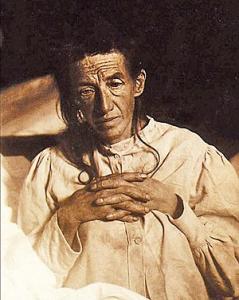
Anna Adams Gordon
(1853–1931)
She was an American social reformer, songwriter, and, as national president of the Woman’s Christian Temperance Union when the Eighteenth Amendment was adopted, a major figure in the Temperance movement.

Robert Baden-Powell, 1st Baron Baden-Powell
February 22, 1857 –January 8, 1941)
He was a British Army officer, writer, founder and first Chief Scout of the world-wide Scout Movement, and founder, with his sister Agnes, of the world-wide Girl Guide/Girl Scout Movement. Baden-Powell wrote the seminal work Scouting for Boys, which, with his previous 1899 book Aids to Scouting for N.-C.Os and Men (intended for the military) captured the imagination of the boys of Britain and led to the creation of the Scout Movement.

Aleksandr Solzhenitsyn’s Family Tree
Захар Фёдорович Щербак (1858-1932)
+ Евдокия Григорьевна Щербак (Коваль) (c.1866-1931)
= Taisiya Solzhenitsyna (Shcherbak) (1894-1944)
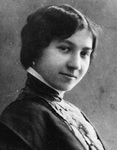
Taisiya Solzhenitsyna
+ Isaakiy Solzhenitsyn (1891-1918)
Aleksandr Solzhenitsyn
(December 11, 1918 – August 3, 2008)
He was a Russian author and Soviet dissident who helped to raise global awareness of political repression in the Soviet Union, especially the Gulag prison system. He was awarded the 1970 Nobel Prize in Literature “for the ethical force with which he has pursued the indispensable traditions of Russian literature”. His non-fiction work The Gulag Archipelago “amounted to a head-on challenge to the Soviet state” and sold tens of millions of copies.
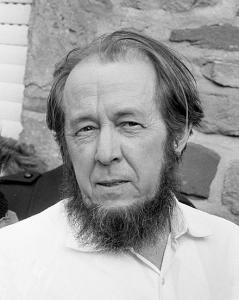
Emmeline Pankhurst,
(July 15, 1858 – June 14, 1928)
She was a British political activist who organised the British suffragette movement and helped women to win in 1918 the right to vote in Great Britain and Ireland. In 1999, Time named her as one of the 100 Most Important People of the 20th Century, stating that “she shaped an idea of objects for our time” and “shook society into a new pattern from which there could be no going back”. She was widely criticised for her militant tactics, and historians disagree about their effectiveness, but her work is recognised as a crucial element in achieving women’s suffrage in the United Kingdom. She was the mother of Christabel, Sylvia and Adela Pankhurst
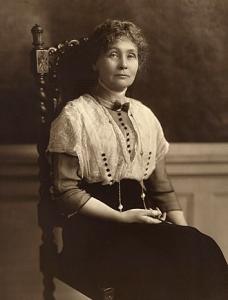
Agnes Baden-Powell
(December 16, 1858 – June 2, 1945)
She was the younger sister of Robert Baden-Powell, 1st Baron Baden-Powell, and was most noted for her work in establishing the Girl Guide movement as a female counterpart to her older brother’s Scouting Movement.
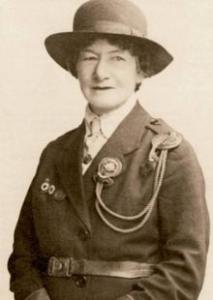
Caroline Bayard Stevens Wittpenn
(November 21, 1859 – December 4, 1932)
She was a social reformer and welfare worker from Hoboken, New Jersey. She directed several welfare organizations in New Jersey in the early twentieth century, and she worked within the state’s government to promote welfare-related causes. She also campaigned to establish Clinton Farms Reformatory, the first dedicated women’s prison in New Jersey, and led its board of managers for nearly twenty years.
Her Dad was
Edwin Augustus Stevens
(July 28, 1795 – August 7, 1868)
He was an American engineer, inventor, and entrepreneur who left a bequest that was used to establish the Stevens Institute of Technology.
Carrie Chapman Catt
(January 9, 1859 – March 9, 1947)
She was an American women’s suffrage leader who campaigned for the Nineteenth Amendment to the United States Constitution, which gave U.S. women the right to vote in 1920. Catt served as president of the National American Woman Suffrage Association from 1900 to 1904 and 1915 to 1920. She founded the League of Women Voters in 1920 and the International Woman Suffrage Alliance in 1904, which was later named International Alliance of Women. She “led an army of voteless women in 1919 to pressure Congress to pass the constitutional amendment giving them the right to vote and convinced state legislatures to ratify it in 1920”. She “was one of the best-known women in the United States in the first half of the twentieth century and was on all lists of famous American women.”
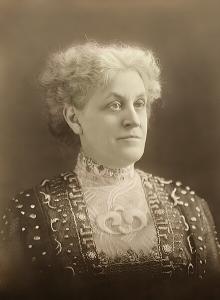
Malcolm X’s Family Tree
John Little (1859–1940)
+ Ella Gray Little 1865–1932
= Rev Earl Little (1890-1931)
Rev Earl Little
+ Louise Little (1894 or 1897 – December 18, 1989)
Malcolm X – Wikipedia
(May 19, 1925 – February 21, 1965)
He was an African American revolutionary, Muslim minister and human rights activist who was a prominent figure during the civil rights movement until his assassination in 1965. A spokesman for the Nation of Islam (NOI) until 1964, he was a vocal advocate for Black empowerment and the promotion of Islam within the African American community. A controversial figure accused of preaching violence, Malcolm X is also a widely celebrated figure within African American and Muslim communities for his pursuit of racial justice.

Born in 1860’s
The Civil War Years in Wonderland- 1860 – 1869
Jane Addams,
(September 6, 1860 – May 21, 1935)
She was an American settlement activist, reformer, social worker, sociologist, public administrator, philosopher, and author. She was a leader in the history of social work and Women’s suffrage. In 1889, Addams co-founded Hull House, one of America’s most famous settlement houses, in Chicago, Illinois, providing extensive social services to poor, largely immigrant families. Philosophically a “radical pragmatist“, she was arguably the first woman public philosopher in the United States. In the Progressive Era, when even presidents such as Theodore Roosevelt and Woodrow Wilson identified themselves as reformers and might be seen as social activists, Addams was one of the most prominent reformers.
An advocate for world peace, and recognized as the founder of the social work profession in the United States, in 1931 Addams became the first American woman to be awarded the Nobel Peace Prize. Earlier, Addams was awarded an honorary Master of Arts degree from Yale University in 1910, becoming the first woman to receive an honorary degree from the school. In 1920, she was a co-founder of the American Civil Liberties Union (ACLU).
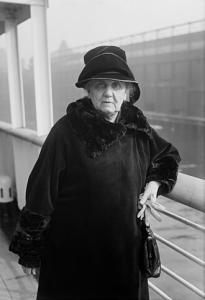
Juliette Gordon Low,
(October 31, 1860 – January 17, 1927)
She was the American founder of Girl Scouts of the USA. Inspired by the work of Robert Baden-Powell, founder of Scout Movement, she joined the Girl Guide movement in England, forming her own group of Girl Guides there in 1911.
In 1912, she returned to the United States, and the same year established the first Girl Guide troop in the country in Savannah, Georgia. In 1915, the United States’ Girl Guides became known as the Girl Scouts, and Juliette Gordon Low was the first leader. She remained active until the time of her death.
Her birthday, October 31, is celebrated annually by the Girl Scouts as “Founder’s Day”
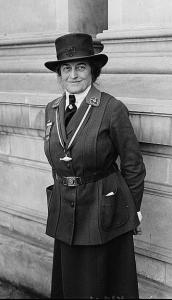
The Civil War Years
Bernard Mizeki
(c. 1861 –June 18, 1896)
was an African Christian missionary and martyr. Born in Mozambique, he moved to Cape Town, attended an Anglican school, and became a Christian. Under the influence of his teachers, from the Society of St John the Evangelist (SSJE, an Anglican religious order for men, popularly called the Cowley Fathers), he became a Christian and was baptized on March 9, 1886. Besides the fundamentals of European schooling, he mastered English, French, High Dutch, and at least eight local African languages. In time he would be an invaluable assistant when the Anglican church began translating sacred texts into African languages
Through the work of the Cowley Fathers‘ mission, and particularly the night school run by German missionary Baroness Paula Dorothea von Blomberg, he became a Christian. He and five others were some of the first converts, baptized in St Philip’s Mission, Sir Lowry Road, on 7 March 1886. Shortly thereafter, Bernard (then about 25 years old) started work at St Columba’s Hostel, which was run by the missionaries for African men. Within a few months he was sent to Zonnebloem College to train as a catechist.
Frederick Russell Burnham
(May 11, 1861 – September 1, 1947)
He was an American scout and world-traveling adventurer. He is known for his service to the British South Africa Company and to the British Army in colonial Africa, and for teaching woodcraft to Robert Baden-Powell in Rhodesia. Burnham helped inspire the founding of the international Scouting Movement.
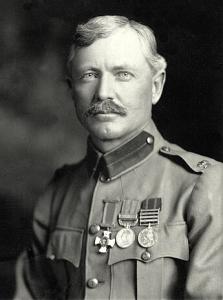
Ida B. Wells
(July 16, 1862 – March 25, 1931)
He was an American investigative journalist, educator, and early leader in the civil rights movement. She was one of the founders of the National Association for the Advancement of Colored People (NAACP). Wells dedicated her career to combating prejudice and violence, and advocating for African-American equality—especially that of women
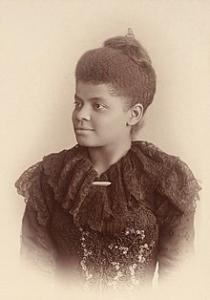
Anna Jarvis
(May 1, 1864 – November 24, 1948)
She was the founder of Mother’s Day in the United States. Her mother had frequently expressed a desire to establish such a holiday, and after her mother’s death, Jarvis led the movement for the commemoration. However, as the years passed, Jarvis grew disenchanted with the growing commercialization of the observation and even attempted to have Mother’s Day rescinded. By the early 1940s, she had become infirm, and was placed in a sanatorium by friends and associates where she died on November 24, 1948. A legend exists that a portion of her medical bills were paid for by florists.
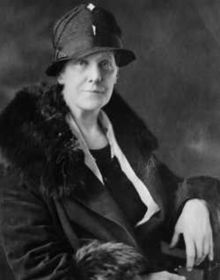
Martin Luther King’s Father
James Albert King (December 1864 – November 17, 1933)
was the father of Martin Luther King Sr. (December 19, 1899 – November 11, 1984) and paternal grandfather of civil rights leader Martin Luther King Jr., (January 15, 1929 – April 4, 1968) A. D. King (July 30, 1930 – July 21, 1969), and Christine King Farris (September 11, 1927 – June 29, 2023) . King struggled with alcoholism, and disapproved of his son and wife attending church. When his son Martin became involved in an altercation with a white property owner the family went into hiding for a period.
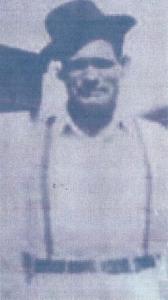
Edith Cavell
(December 4, 1865 – October 12, 1915)
She was a British nurse. She is celebrated for treating wounded soldiers from both sides without discrimination during the First World War and for helping some 200 Allied soldiers escape from German-occupied Belgium. Cavell was arrested, court-martialled under German military law and sentenced to death by firing squad. Despite international pressure for mercy, the German Government refused to commute her sentence and she was shot. The execution received worldwide condemnation and extensive press coverage.
The night before her execution, she said, “Patriotism is not enough. I must have no hatred or bitterness towards anyone”. These words were inscribed on the Edith Cavell Memorial opposite the entrance to the National Portrait Gallery near Trafalgar Square. Her strong Anglican beliefs propelled her to help all those who needed it, including both German and Allied soldiers. She was quoted as saying, “I can’t stop while there are lives to be saved.” The Church of England commemorates her in its Calendar of Saints on October 12.
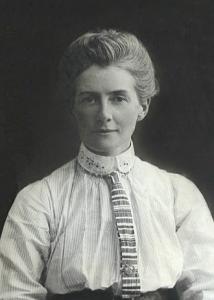
End of the Civil War Years
Elena Meissner
(1867–1940)
She was a Romanian feminist and suffragist. She was the co-founder of the Romanian women’s movement organisation Asociația de Emancipare Civilă și Politică a Femeii Române (1918) and its president in 1919.
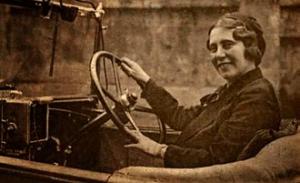
Margaret Brown
(July 18, 1867 – October 26, 1932),
Posthumously known as the “Unsinkable Molly Brown“, was an American socialite and philanthropist. She was a survivor of the RMS Titanic, which sank in 1912, and she unsuccessfully urged the crew in Lifeboat No. 6 to return to the debris field to look for survivors.
During her lifetime, her friends called her “Maggie”, but by her death, obituaries referred to her as the “Unsinkable Mrs. Brown”. Gene Fowler referred to her as “Molly Brown” in his 1933 book Timberline. The following year, she was referred to as the “Unsinkable Mrs. Brown” and “Molly Brown” in newspapers.

Florence Pannell
(1868 – 1980)
A 108-Year-Old Woman Recalls What It Was Like to Be a Woman in Victorian England | Open Culture
Florence Pannell was born in London in 1868, 3 years after the US abolished slavery and eleven before the advent of the electric lightbulb.
The AIDS crisis is one event of global historical importance that Mrs. Pannell missed—barely—she died in 1980, a few months shy of her 112th birthday.
W.E.. B. Du Bois
February 23, 1868 – August 27, 1963)
He was an American sociologist, socialist, historian, and Pan-Africanist civil rights activist.

Mary Mallon
(September 23, 1869 – November 11, 1938),
She is commonly known as Typhoid Mary, was an Irish-born American cook who is believed to have infected between 51 and 122 people with typhoid fever. The infections caused three confirmed deaths, with unconfirmed estimates of as many as 50. She was the first person in the United States identified as an asymptomatic carrier of the pathogenic bacteria Salmonella typhi. She was forcibly quarantined twice by authorities, the second time for the remainder of her life because she persisted in working as a cook and thereby exposed others to the disease. Mallon died after a total of nearly 30 years quarantined. Her popular nickname has since become a term for persons who spread disease or other misfortune.
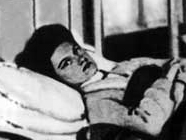
Mahatma Gandhi
(October 2, 1869 –January 30,1948)
In September 1888 at age 18, Gandhi left India alone to study law in London. He attempted to become an English gentleman, buying suits, fine-tuning his English accent, learning French, and taking music lessons. Deciding that was a waste of time and money, he spent the rest of his three-year stay as a serious student living a simple lifestyle. Reads books on simple living and decides to reduce expenses by half; studies religious literature; reads Gita for first time and is deeply impressed

Born in 1870’s
The Post Civil War Years – 1870 – 1879
Emma Wilson
(May 12, 1870 – October 13, 1983)
She was a validated American supercentenarian who was also the World’s Oldest Person.

Mathew Beard,
(July 9, 1870 – February 16, 1985: 114 years, 222 days)
He was believed to have been the oldest living person in the world from the death of Emma Wilson till his own death.
Elie Wiesel’s Parents
Eliezer Lazar Wiesel, Halevi (1872-1917)
+ Shlomo Elisha Wiesel, Halevi (1894-1944)
= Elie Wiesel
(September 30, 1928 – July 2, 2016)
He was a Romanian-born American writer, professor, political activist, Nobel laureate, and Holocaust survivor. He authored 57 books, written mostly in French and English, including Night, a work based on his experiences as a Jewish prisoner in the Auschwitz and Buchenwald concentration camps.

Emily Davison
(October 11, 1872 – 8 June 1913)
She was an English suffragette who fought for votes for women in Britain in the early twentieth century. A member of the Women’s Social and Political Union (WSPU) and a militant fighter for her cause, she was arrested on nine occasions, went on hunger strike seven times and was force-fed on forty-nine occasions. She died after being hit by King George V‘s horse Anmer at the 1913 Derby when she walked onto the track during the race.

Sara Josephine Baker,
(November 15, 1873 – February 22, 1945)
She was an American physician notable for making contributions to public health, especially in the immigrant communities of New York City. Her fight against the damage that widespread urban poverty and ignorance caused to children, especially newborns, is perhaps her most lasting legacy. In 1917, she noted that babies born in the United States faced a higher mortality rate than soldiers fighting in World War I, drawing a great deal of attention to her cause. She also is known for (twice) tracking down Mary Mallon, better known as Typhoid Mary.
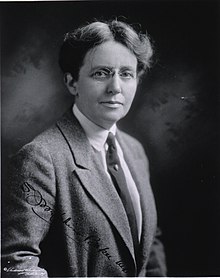
Lewis Hine
September 26, 1874 – November 3, 1940)
He was an American sociologist and muckraker photographer. His photographs were instrumental in bringing about the passage of the first child labor laws in the United States.
Fall 1889: 15 year old Lewis began attending West High School, located not far from his home on Division Street. While he pursued his studies he continued to help out in the family eatery and even found time to engage in some of his hobbies. From an early age Hine had been interested in art, particularly wood carving and sculpture. Indeed during his years of a teenager he often voiced hopes that someday he would become an artist or sculptor. In this he was encouraged by his parents, particularly his musically and artistically inclined father, who for a short time, as we have seen, had been a sign painter by trade. However as a further indicator that the Hine family struggled during these years, while still in highschool, young Lewis was forced to begin part-time work in a upholstery factory. -Lewis Hine: Photographer and American Progressive By Timothy J. Duerden · 2018
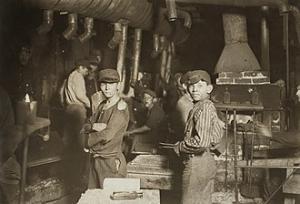
Temple Grandin’s Parents
John Livingston Grandin, Jr. (1874-1963)
+ Richard McCurdy Grandin (1914-1993)
(born August 29, 1947) is an American academic and ethologist. She is a prominent proponent of the humane treatment of livestock for slaughter and the author of more than 60 scientific papers on animal behavior. Grandin is a consultant to the livestock industry, where she offers advice on animal behavior, and is also an autism spokesperson.
Grandin is one of the first autistic people to document the insights she gained from her personal experiences with autism. She is a faculty member with Animal Sciences in the College of Agricultural Sciences at Colorado State University.
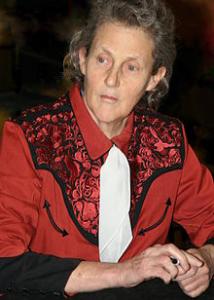
Jeanne Calment,
(February 21, 1875 – August 4, 1997)
She was a French supercentenarian and, with a documented lifespan of 122 years and 164 days, the oldest person ever whose age has been verified. Her longevity attracted media attention and medical studies of her health and lifestyle. She is the only person verified to have reached the age of 120 and beyond.
According to census records, Calment outlived both her daughter and grandson. In January 1988, she was widely reported to be the oldest living person, and in 1995, at age 120, was declared the oldest verified person to have ever lived.
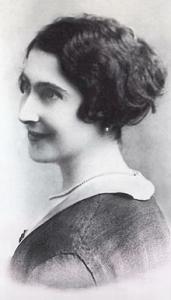
Bob Smith (doctor)
(August 8, 1879 – November 16, 1950)
Also known as Dr. Bob, was an American physician and surgeon who cofounded Alcoholics Anonymous
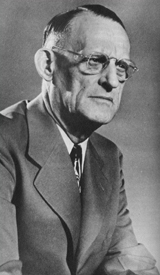
with Bill Wilson
(more commonly known as Bill W.
(November 26, 1895 – January 24, 1971)
AA is an international mutual aid fellowship with about two million members worldwide belonging to AA groups, associations, organizations, cooperatives, and fellowships of alcoholics helping other alcoholics achieve and maintain sobriety. Following AA’s Twelfth Tradition of anonymity, Wilson is commonly known as “Bill W.” or “Bill”. To identify each other, members of AA will sometimes ask others if they are “friends of Bill”. After Wilson’s death, and amidst controversy within the fellowship, his full name was included in obituaries by journalists who were unaware of the significance of maintaining anonymity within the organization.
Wilson’s sobriety from alcohol, which he maintained until his death, began December 11, 1934. In 1955, Wilson turned over control of AA to a board of trustees. Wilson died in 1971 of emphysema from smoking tobacco complicated by pneumonia. In 1999, Time listed him as “Bill W.: The Healer” in the Time 100: The Most Important People of the Century
Margaret Sanger
(September 14, 1879 – September 6, 1966),
She was an American birth control activist, sex educator, writer, and nurse. She popularized the term “birth control”, opened the first birth control clinic in the United States, and established organizations that evolved into the Planned Parenthood Federation of America.
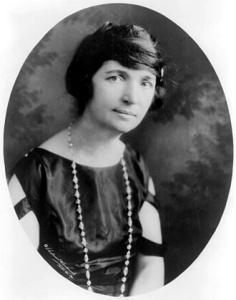
Kartini,
(April 21, 1879 – September 17, 1904),
She was a prominent Indonesian activist who advocated for women’s rights and female education.
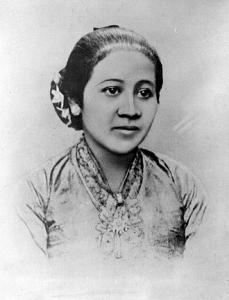
Born in 1880’s
1st Electric Circus Garden Outlaws – 1880 – 1888
Helen Keller
(June 27, 1880 – June 1, 1968)
She was an American author, disability rights advocate, political activist and lecturer. Born in West Tuscumbia, Alabama, she lost her sight and her hearing after a bout of illness when she was 19 months old. She then communicated primarily using home signs until the age of seven, when she met her first teacher and life-long companion Anne Sullivan. Sullivan taught Keller language, including reading and writing. After an education at both specialist and mainstream schools, Keller attended Radcliffe College of Harvard University and became the first deafblind person in the United States to earn a Bachelor of Arts degree.
Helen Keller was attending the Perkins Institute for the Blind. She was one of twelve inaugural inductees to the newly founded Alabama Writers Hall of Fame on June 8, 2015
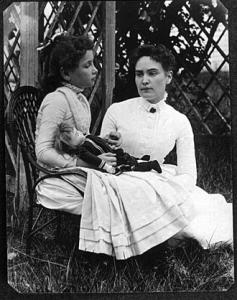
Sonora Smart Dodd
(February 18, 1882 – March 22, 1978)
She was the daughter of American Civil War veteran William Jackson Smart, and was responsible for the founding of Father’s Day.
1885
While Marty and Doc Traveled Through Time This Also Happened
Alice Paul
(January 11, 1885 – July 9, 1977)
She is one of the foremost leaders and strategists of the campaign for the Nineteenth Amendment to the U.S. Constitution, which prohibits sex discrimination in the right to vote.
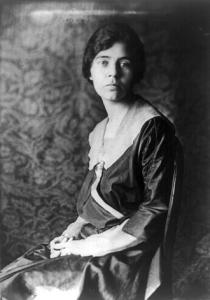
Violet Jessop
(October 2, 1887 – May 5, 1971)
She was an Irish-Argentine ocean liner stewardess and nurse in the early 20th century. Jessop is best known for having survived the sinking of both RMS Titanic in 1912 and her sister ship HMHS Britannic in 1916, as well as having been aboard the eldest of the three sister ships, RMS Olympic, when it collided with the British warship HMS Hawke in 1911.

Saints and other Catholics Alive and Well in 1889
Descendants of Popes and Presidents Alive in 1889
Ancestors of Popes and Presidents Alive in 1889
Next Time on
HOARATS
To Understand
What I love and How I Write About History
Hit the Link Above.
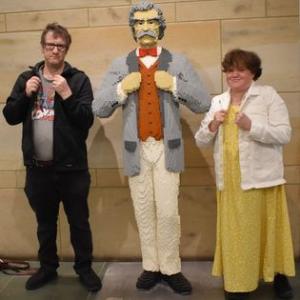
To understand about this particular series I’m writing about, please read
The Catholic Bard’s Guide To History Introduction
And to view a historical article click on


